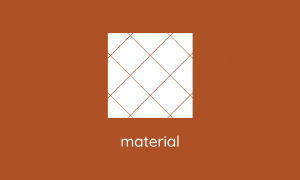
Material
- You are here:
- Startseite

The thermal properties of a building depend to a large extent on the choice of materials and their associated properties. Heat can be transported through transmission, radiation and convection. In this context, the heat transfer of a material is specified with the thermal conductivity (W/mK). The most effective insulating material is air, but only if it does not circulate and thus convection, a transporter of heat, is avoided. Porous and light materials in organic or inorganic form are particularly well suited for insulation.
The following points need to be kept in mind:
- ‘grey’ or ‘embodied’ energy needed for producing / manufacturing the material.
- locally availability.
- ase of construction, replacement and maintenance.
- durability.
- the material / finishes should not be injurious to health (humans as well as domestic animals / pets)
- physical properties – like expansion / shrinkages should not affect the durability of the structure.
- ease of disposal at the end of its life – cycle.
One should look into the ‘cradle to cradle’ philosophy for all the preferred materials and technologies in order to plan a truly sustainable building.